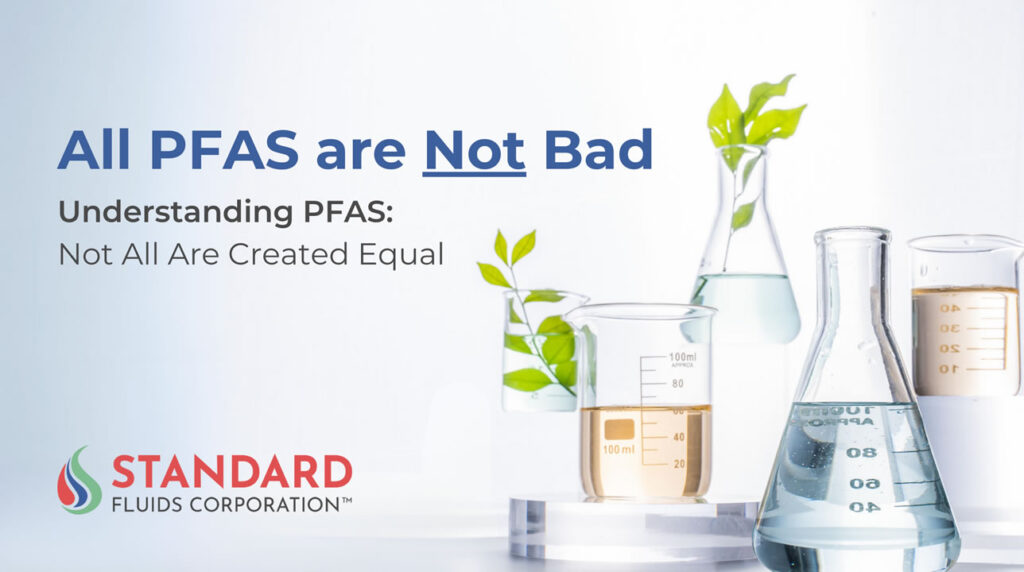“All PFAS are Not Bad. Why We Need Some PFAS to Continue Life as We Know It”
Title: Understanding PFAS: Not All Are Created Equal
In recent years, the term “PFAS” has become a hot topic, often surrounded by concerns and misconceptions. PFAS, or per- and polyfluoroalkyl substances, are a broad group of man-made chemicals that have been used in various industries worldwide since the 1940s. From non-stick cookware to firefighting foams, PFAS have been integral in enhancing product performance and safety. However, the term has also been associated with environmental and health concerns, leading to a growing belief that all PFAS are harmful and should be avoided.
But is that the whole story? The reality is more nuanced. While it’s true that some PFAS have been linked to environmental persistence and potential health risks, it’s crucial to recognize that not all PFAS are created equal. There are many types of PFAS, each with distinct properties, uses, and impacts. Some PFAS are indeed harmful and need to be regulated, but others are low-toxicity, sustainable, and safe for use in essential applications.
Differentiating PFAS: A Closer Look
It’s vital to differentiate between the various types of PFAS and understand their specific roles. As we launch this new blog series, “All PFAS are Not Bad. Why We Need Some PFAS to Continue Life as We Know It,” we’ll delve into the science and facts about PFAS to provide a clearer picture.
We aim to challenge the one-size-fits-all narrative surrounding PFAS and explore why certain PFAS are necessary for critical industries like fire suppression, immersion cooling, and precision cleaning. These applications rely on specific PFAS due to their unique properties, such as heat capacity, thermal stability, non-flammability, and effectiveness in extreme conditions. Without these PFAS, we would lose the ability to protect lives and property from fires, efficiently cool advanced electronic systems, and maintain the cleanliness required in sensitive manufacturing processes.
Why We Need Some PFAS
Understanding the distinction between harmful and beneficial PFAS is essential for making informed decisions about their use. Not only do some PFAS have a minimal impact on the environment and human health, but they are also pivotal in ensuring safety, efficiency, and sustainability across various sectors. For instance, PFAS used in fire suppression systems are designed to be low in toxicity, non-ozone depleting, and low global warming potential, reducing their environmental footprint while still providing the necessary performance capabilities. As in fire protection, materials meeting the definition of PFAS are utilized in immersion cooling for data centers or electronics help prevent overheating and ensure reliable performance, all while being formulated to pose minimal risk.
Standard Fluids PFAS Experts
Standard Fluids is committed to raising the standard in engineered fluids. To that end, we have melded an unrivaled advisory panel with a team of long-term, highly experienced leaders. We believe that in starting our company last year, we hit the jackpot with Paul Rivers, Lead Inventor of our own Standard Fluids™ SF 1230™ Fire Protection Fluid (formerly 3M™ Novec™ 1230 Fire Protection Fluid) and John Owens, inventor or co-inventor on more than 50 patents related to organofluorine compounds and their uses and author or co-author of over 50 publications on these topics. Rivers and Owens serve as Senior Advisor and Technical Advisor respectively, and provide resources and touchstones for the Standard Fluids team and our customers whenever questions arise.
What to Expect from This Series
Throughout this series, we will explore:
- The Basics of PFAS: What are PFAS, and why are they used?
- Differentiating PFAS: Understanding the differences between various types and their uses.
- Safe and Sustainable PFAS: Highlighting PFAS with low toxicity that are safe for critical applications.
- Industry Applications: How specific PFAS are essential in fire protection, immersion cooling, and precision cleaning.
- Future Outlook: The evolving landscape of PFAS regulation and innovation.
Our goal is to provide a balanced perspective that recognizes both the risks and the indispensable benefits of PFAS in modern society. By the end of this series, we hope you’ll have a deeper understanding of why “all PFAS are not bad” and why some are essential for maintaining the safety, performance, and sustainability standards we’ve come to rely on in everyday life.
Follow along in this series as we embark on a journey to demystify PFAS and explore their indispensable role in today’s world. Please reach out with any specific questions, and we are happy to have a conversation.


